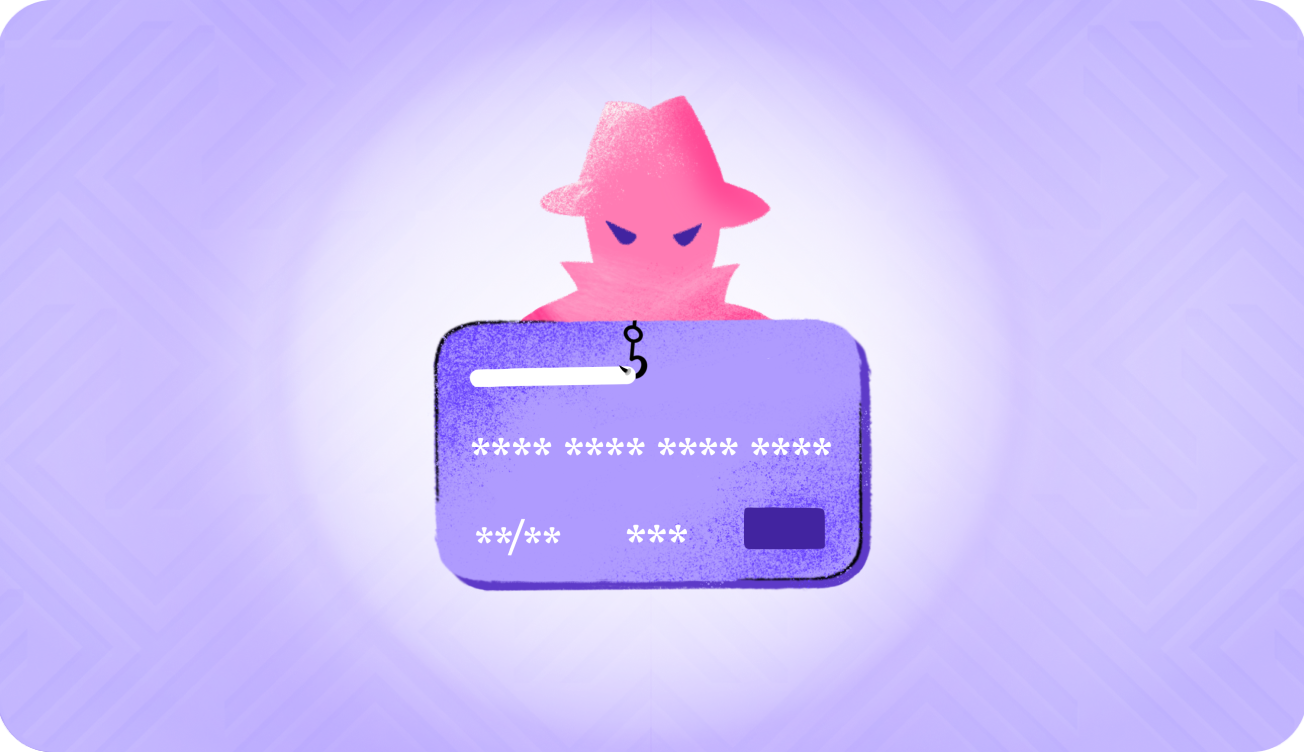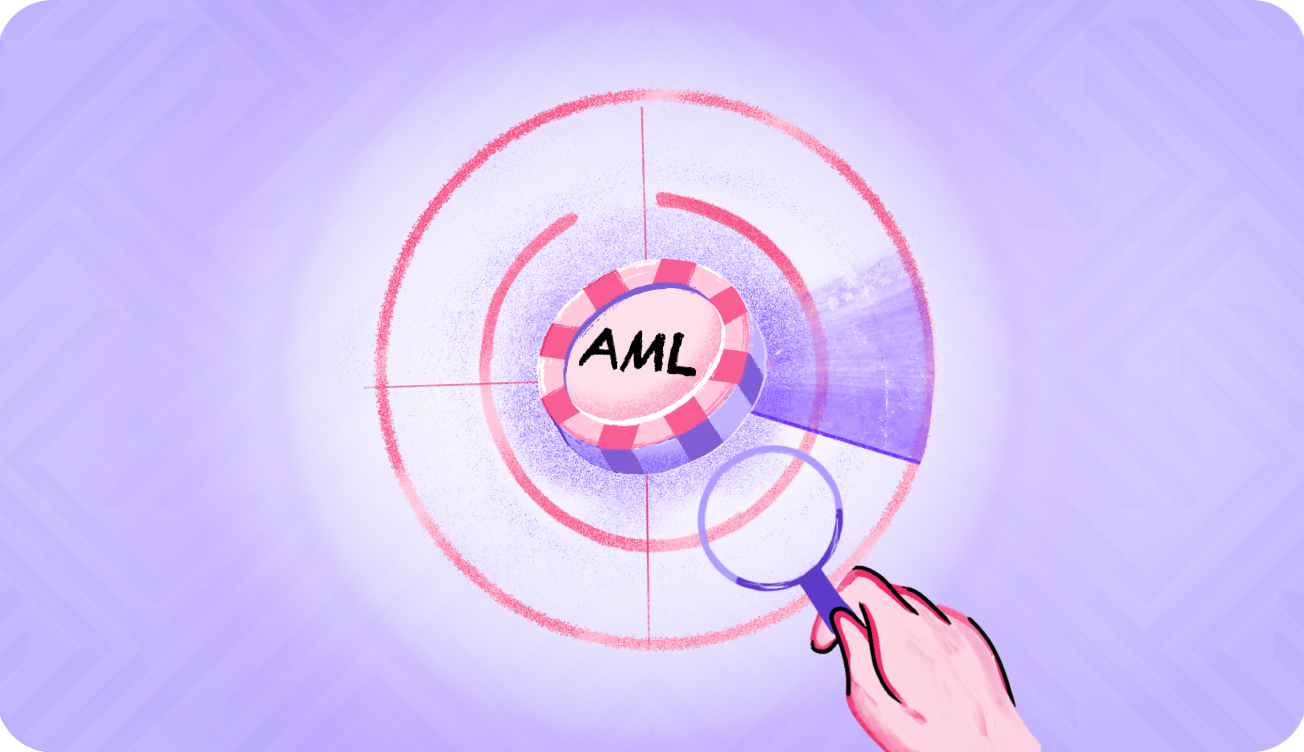Imagine coming to work on a Monday morning and having disastrous news waiting for you— someone hacked customer accounts, resulting in fraudulent transactions. You now have to deal with customer complaints and work on damage control.
It’s going to be a long & strenuous day, isn’t it?
You should know that these incidents are not uncommon in financial institutions and eCommerce industries, especially with the rise in digital transactions and online payment fraud.
However, as a business, you are responsible for ensuring the integrity of customer accounts and mitigating the risks of unauthorized transactions.
How do you do that?
By using fraud monitoring tools that facilitate fraud detection and transaction monitoring.
The following article gives you an overview of fraud monitoring, why fraud monitoring tools are important, and how the latest technologies play a central role in fraud prevention.
What is fraud monitoring?
Fraud monitoring is the process of observing and analyzing events, transactions, and behaviors in real time to detect fraudulent activities online.
It is part of a bigger goal of preventing reputation loss from fraudulent transactions and security hacks. In 2022, more than 2.8 million customers reported some kind of fraud in the US alone, with most of them being imposter scams.
Fraud monitoring is essential to help financial institutions and online stores detect unauthorized transactions in advance. This prevents financial losses and helps companies easily comply with regulations.
How does a fraud monitoring system work?
Let’s check out how fraud monitoring works in detail:
- Real-time data gathering
Continuous fraud monitoring involves gathering real-time data like IP addresses, device data, payment information, transaction data, biometrics, etc. You either gather data by continuous transaction monitoring or continuous session monitoring. The data collection process is sometimes complicated, as you must get help from other tools to gather extra information for the next step.
- Analyzing and anomaly detection
Once you gather the data, you combine them into detailed reports and set predetermined rules and customizations that help you detect patterns and anomalies. For example, the system compares the contact information with the credit card details or the card country with the IP address.
Any mismatch between the two indicates an anomaly. Setting rules can get very specific, where you can add multiple data points and combine machine learning to analyze behavior for fraudulent activities.
- Alters & investigations
Not all the rules you set in the above step need equal attention. You can set alerts for important triggers, mark others based on risk levels, and flag them for further investigation. You can even involve manual intervention and keep a fraud analyst in the loop whenever the system triggers a rule. They can review the action and check if the cases are risky.
Why do you need fraud monitoring software?
Check out some of the top reasons you need a fraud monitoring solution.
- Proactively monitor risky transactions
Continuous fraud monitoring helps foster a security culture and detect fraudulent activities before it’s too late.
Without real-time monitoring, you won’t know where there are security gaps and potential issues you might face with transactions.
- Reduce financial losses
Fraud doesn’t benefit the company or the customer. A fraudulent transaction results in chargeback expenses that the company is responsible for paying the customer, in addition to substantial legal fees, penalties, and other costs.
The company also suffers from reputation damage, which ultimately has a lasting impact on revenue. Fraud monitoring helps prevent such events and aids in financial fraud detection before they pose serious threats.
- Positive customer experience
As you onboard customers, instilling trust is crucial as it helps them be at peace knowing their data and money won’t fall into the wrong hands. Having fraud monitoring tools puts customers at ease. Improving fraud monitoring practices helps enhance security for high-risk customers and routing their transactions for further authentication. Your brand value gets a boost, as customers are at ease while transacting with you and experience less frustration and delays.
- Help prevent identity theft
Fraudsters often engage in identity theft activities, taking over customer accounts, stealing credit card information, and embezzling money. Advanced fraud monitoring methods go beyond identifying the customer login and use analytical models to identify the perpetrators who commit identity theft. Continuous fraud monitoring considers historical patterns to spot potential takeovers and fraud prevention in different types of identity theft.
- Fulfill regulatory compliance
It’s not just your brand that works towards combating money laundering and financial crime, but your country, too. Many nations have regulatory compliance to reduce fraud and money laundering. For example, the General Data Protection Regulation (GDPR) requires businesses to protect customer data proactively. Fraud monitoring tactics powered by machine learning assist firms in receiving alerts when an unauthorized employee gets access to customer data.
Similarly, Payments Services Directive 2 enables security during online payments. Fraud monitoring helps you be compliant with several regulations including anti-money laundering (AML), Know Your Customer (KYC), and Customer Due Diligence (CDD).
The role of AI & ML in fraud prevention
The use of AI and ML in fraud monitoring tools is increasing exponentially. Let’s examine how these technologies are improving fraud monitoring and detection.
- Identity verification
AI-powered Optical Character Recognition (OCR), Natural Language Processing (NLP), and face
authentication models take charge of identity verification for banks and financial
institutions. Identity verification tools like HyperVerge verify customer identity proof
with the central database within minutes. This helps you scale the verification process and
reduce the manual hours spent verifying each user.
Machine learning models in OCR can analyze and verify user information from their identity documents, like passports and licenses or facial recognition. This process confirms that the user is who they claim to be. Face recognition models identify every frame for anomalies to catch inconsistencies. For firms conducting KYC checks and meeting AML requirements, these technologies significantly help reduce fraudulent practices and save time & costs.
- Text analysis
OCR technology with ML analyzes large volumes of textual data to uncover patterns, anomalies, and insights that may indicate fraudulent activities. It deciphers inconsistencies in emails, transaction descriptions, or social media posts. If text analysis tools encounter unusual workings and irregular sentence structures, they flag them so fraud analysts can examine them.
Text analysis with NLP also allows machines to understand, interpret, and generate language humanely. It is used to understand the context of documents and communication, revealing deceitful behavior, phishing emails, and fraudulent claims in insurance reports.
- Risk scoring
Fraud detection with ML helps banks and financial institutions make better decisions and assign accurate risk scores based on real-time updates. ML assigns risk scores based on transaction amount, frequency, past behavior, and location. The higher the risk, the higher the likelihood of fraud.
ML algorithms identify subtle correlations in user accounts that traditional methods might overlook. Fraud detection tools with ML provide a comprehensive outlook of potential threats and specific transactions that call for further investigation.
- Anomaly detection
Since the machine learning model relies considerably on training and assessing patterns, it improves at determining inconsistent patterns. For example, if a user is known to use their credit card often and suddenly stops and makes only big cash withdrawals, you receive an alert that prompts you to intervene.
AI & ML in banking and financial institutions identify these anomalies in real time based on the data we feed them. They collect data points at regular or irregular intervals to interpret when there are high transaction amounts and frequent purchases in unusual locations.
- Adaptive learning
The best part about machine learning is its ability to improve and learn. As fraudsters become more sophisticated with their tactics, machine learning leans on new data and analyzes patterns to become more efficient in fraud detection.
Fraud monitoring tools with ML adjust according to feedback to keep up with the pace of changing threat frameworks. Treat it like a child who you have to teach initially but who eventually becomes independent with the knowledge they garner.
Top features financial institutions need to look for in fraud monitoring systems
Today’s fraud monitoring systems need to be equipped with state-of-the-art features for fraud detection, considering the sophisticated nature of financial crimes. When choosing a fraud monitoring system, look out for the following must-have features.
- Real-time monitoring
Fraud detection works best when there is near or real-time monitoring. The real-time monitoring feature identifies fraudulent activities as they occur or immediately after.
This way, you can take immediate action and even get the opportunity to stop the transaction. The swift fraud detection minimizes financial damage, protects customer accounts, and maintains trust.
- Machine learning
If you’re in an industry like finance or eCommerce, you’re probably dealing with a large volume of customer transactions every day. It is impossible to review the authenticity of these transactions manually.
Machine learning becomes an integral feature since it automates fraud detection in online transactions with commendable accuracy. It is also a must-have feature if you’re vulnerable to sophisticated frauds that compromise AML regulations and KYC norms.
- KYC & AML compliance
Based on your country and region, you need to keep up with the KYC and AML regulations. Check if your tool provides means to comply with the KYC and AML regulations, so you don’t have to keep this at the back of your mind. If a financial fraud detection tool can fulfill KYC & AML compliance, you can ultimately avoid the risks of paying fines resulting from the lack of compliance.
Another must-have feature is the solution’s global reach if you’re dealing with international clients. Does it comply with global AML regulations? If yes, is it available in multiple languages, too?
- Data visualization
Check if your fraud monitoring tool has an analytics dashboard that provides a bird’s-eye view of the data. The anti-fraud solution dashboard must be intuitive, provide an overview of different types of risks, and allow you to drill down for further details.
The data visualization feature also allows everyone to be on the same page about the potential fraud case and review the transaction to take the necessary action.
- Deepfake detection
Deepfake identity fraud shows us the dark side of AI, where AI is used to alter media files using neural networks to change someone’s identity. Deep fake detection is the only way you can combat advanced identity theft fraud. Check if your tool provides accurate detection and has advanced algorithms with a high real-time confidence score.
AI-powered deepfake fraud detection tools like HyperVerge’s image and video detection models are a highly accurate means of analyzing digital media and identifying signs of manipulation. It can even detect AI-generated selfies and fake images and videos by assessing every frame.
- Deduplication
Having data in more than one place increases the chances of data compromise. Data misuse-related identity theft was at 68% in the US in 2021, which was 23% more than the year before. With more data storage, you’re just increasing the chances of them getting in the wrong hands.
Data deduplication ensures data security by storing it in a single place, reducing the chances of identity fraud. It also helps prevent fraudulent payments made multiple times, maintain financial and regulatory integrity, and save on storage and maintenance costs.
How to choose fraud monitoring solutions
Now that you know the features, you already have an overview of the type of fraud monitoring system you need. However, there are many other factors you need to consider before you make your decision.
- Analyze your needs
What types of fraud are prevalent in your industry? For example, you must focus on continuous transaction monitoring in the eCommerce industry. However, if you’re a financial institution, you may need to prioritize KYC and AML checks before you give out loans or monetary aid.
Analyze your business requirements and choose your features accordingly. Then, check which tool provides the type of features you need.
- Check for data integration & compatibility
Your fraud monitoring tool needs to integrate with your current data sources. Check if the tool offers OCR API integrations, KYC integrations, or software development kits for easy incorporation into your existing workflows. Even if a tool fulfills all your needs, it will fall short if it doesn’t meet compatibility requirements and there’s no data migration availability.
- Look for scalability
As your business grows, your customer base will grow, too, and you need to see if your fraud monitoring solution can handle the volume, transaction speed, and geographic expansion.
Check if the tool has experience working with enterprise-level clients with a massive customer base. For example, HyperVerge has worked with major clients like L&T Finance and AngelOne and verified more than 700 million users for over 100 clients.
- Friendly user interface
If your fraud monitoring tool’s learning curve is steep, you’ll likely abandon it because it is time-consuming and cost-consuming. Go for a low-code or no-code workflow builder with a friendly UI that makes it easy for a person from a non-technical background to build seamless workflows and requires less time to learn.
- Fits your budgetary requirements
Finally, you need a tool that fulfills all the above requirements and is within your budget. You can opt for a low-cost solution, but you must also see if it offers the needed features.
Consider the long-term investment if you opt for a slightly expensive tool. Remember that the repercussions of fraud are much higher than the cost of your tool will ever be. If you want the utmost security from an advanced monitoring solution, do a ROI analysis and go for the one that gives you the highest returns.
Top fraud monitoring tools
Here is a brief overview of the top fraud monitoring solutions in the market.
| Name | Stand-out feature | Best for | Pricing | Ratings |
| HyperVerge | Dedupe solution, deepfake detection, & AML solution | Financial institutions, fintech, crypto, education, logistics & eCommerce, gaming | Custom | G2: 4.5Capterra: 4.5 |
| Sift | Multi-factor authentication & API integration | Digital goods/services & payment service providers | Custom | G2: 4.5Capterra: 4.5 |
| ComplyAdvantage | Fraud transaction monitoring | Insurance, gaming & fintech | Custom | G2: 4.4Capterra: 4 |
| SEON | Device fingerprinting, Custom risk rules & synthetic identity fraud | Fintech, iGaming, eCommerce & crypto | Free, starts from $600/month | G2: 4.6Capterra: 4.9 |
| Kount | Risk scoring & passwordless authentication | eCommerce | Starts from $1000/month | G2: 4.8Capterra: 4.7 |
To get more information on the top fraud monitoring tools, hop on to this blog: Top 6 Fraud Detection Solutions and How to Choose One
Fraud monitoring example: HyperVerge case study
IndMoney is a wealth management platform that previously performed KYC checks manually. The process was error-prone and time-consuming, making it difficult for IndMoney to onboard customers quickly. It was looking for a solution that automated KYC verification with utmost accuracy.
With HyperVerge, it deployed an AI-powered solution for instant ID verification, FaceMatch, and liveliness checks. This video-based KYC implementation reduced 80% of IndMoney’s workload. Post-implementation, IndMoney experienced a fourfold increase in business growth and significantly improved user onboarding efficiency.
Key takeaways:
✓ Took just 9 days for the solution to go from conception to deployment
✓ Experienced 4X business growth since deployment in 2021
✓ HyperVerged flagged 20% of cases for manual review and automated 80% of the cases.
To check out this case study in detail, hop on to this link: How IndMoney launched Video KYC in just 9 days with HyperVerge tech
Monitor fraud and prevent financial loss with HyperVerge
Fraud monitoring tools ensure a comprehensive mitigation and detection framework that allows businesses to identify potential threats proactively.
HyperVerge provides a robust identity verification, deep fake detection, and AML solution that automates customer verification and transaction monitoring and prevents fraudsters from infiltrating your system.
HyperVerge also has experience working with reputable clientele like Angel One, L&T Finance, and HomeCredit, who all leveraged fraud detection solutions and KYC automation. We’ve verified over 750 million IDs with a 95% auto-approval rate. Book a demo to learn more about how HyperVerge can fit into your fraud prevention measures.
FAQs
What is the difference between AML and fraud monitoring?
Both have different objectives. AML regulations focus on complying with financial systems’ legal and ethical implications. Failure to do so has legal consequences, resulting in fines. Fraud monitoring aims to reduce fraud internally to reduce financial loss for customers and the company.
What are fraud monitoring tools?
Fraud monitoring tools help you protect your business from potential fraud by implementing anti-fraud solutions. These tools have AI & ML to analyze historical data and detect irregular, suspicious activity to warn businesses about fraudulent practices.
What is the benefit of fraud monitoring?
Fraud detection solutions help businesses be proactive and alert for potential threats and even set practices in motion if they encounter a fraudulent practice. It helps you track risky transactions, reduce financial losses, and meet regulatory requirements.

















